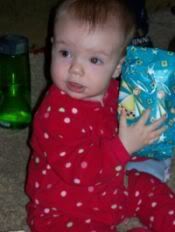OK, great, you got the study. As you note, this is 9 years ago, so a lot of things could and have changed, but this architecture is substantially better than the 2 recent ones, so we would think that the Lexapro is a prime suspect in the sleep disruption. There's much less total wake time within the sleep period. However, there are about 20 awakenings (normally you should have about 2).
Of all those arousals, there's quite a few in REM, and if you blow up the graph, the oxygen waveform looks a little unstable there, so given that OSA tends to be worse in REM, those could be respiratory-oriented, perhaps UARS in nature if the events didn't qualify as apneas or hypopneas.
Overall, a significant increase in arousals occurs after about 3:00 AM, so barring any medication, other underlying medical issue or UARS effect, see how that compares with your sleep studies now, where at 3:00 AM you go to Wake.
Bunch of arousals at sleep onset, again, see how this compares to what you're doing now. This should underscore why it's not those early centrals per se that are the problem in your case.
Oh yeah, the sleep onset-centrals and jerking awake question by brackstone:
SAG, elsewhere wrote:Assuming that the obstructive events are properly managed, then the likelihood of (the example presented there) being sleep-onset centrals is fairly high (you'd need PSG to be 100%) and those things are pretty much a normal event.
Jean Krieger in her chapter on Breathing During Sleep in Normal Subjects in Principles and Practice of Sleep Medicine by Meir H. Kryger summarizes the incidence of central apnea/periodic breathing at sleep onset from 40-80% of normal subjects, and lasting from 10-60 minutes. The trigger is hypercapnia, as opposed to the hypocapnia that creates all the cental apnea havoc in CSBD and CSR. Chemosensitivity and apnea threshold also change.
Other SAG thread wrote:Right, sleep-onset is a very busy time, with a lot of transitional stuff occurring, but this description (awakening with a sudden jerk) sounds a little more like Sleep Starts, also referred to as hypnagogic jerks, sleep-onset myoclonus or hypnic jerks. From the ICSD:
Sleep starts are sudden, brief contractions of the legs, sometimes also involving the arms and head, that occur at sleep onset. Sleep starts usually consist of a single contraction that often affects the body asymmetrically. The jerks may be either spontaneous or induced by stimuli. Sleep starts are sometimes associated with the subjective impression of falling, a sensory flash, or a visual hypnagogic dream or hallucination. A sharp cry may occur.
They're quite common, with a prevalence of about 60-70%.
Starting to get a plan together, Pam, I don't know how well-versed you are about insomnia already, but here's a pretty good State-of-the-Science blurb (Medscape is free):
Insomnia
and begin thinking about Cognitive Behavioral Therapy, a strongly-recommended behavioral approach to insomnia management. Hopefully your new sleep guy will be familiar with this, you may get some good benefit, so familiarize yourself with it for your appointment.
PLMs occur in about 80% of RLS patients, I don't know, I'd call that related.
On the other hand, there's not an awful lot of PLMs there. And PLMs are only a problem if they cause arousal. If those "PLMs" are a
result of arousal, then they're not really PLMs (here comes the chicken again). But if you already have RLS...
Do you have the values for sleep efficiency in there (all 3 studies)?
SAG













